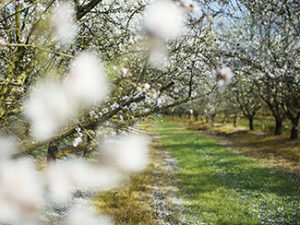Spring Tree Care & Preparation in Wisconsin

4 Tips to help your trees emerge from dormancy
1. Trim & Prune before Budding
Early spring is the perfect time for tree and shrub pruning in Wisconsin. Trimming dead or unwanted branches now will help you guide and shape the growth of new branches. While a late winter/early spring trim and prune is optimal for most species, some are better served by a trimming later in the summer or autumn. Early pruning of fruit trees can also lead to a healthier, more abundant crop.If you’re not certain which trees and shrubs would most benefit from a spring trim, call us, we can help.
2. Remove Winter Wraps & Supports
While an early April blizzard is never out of the question in Wisconsin, the majority of the most damaging winter weather is behind us. You probably have your young or newly-planted trees wrapped and supported. This is a good time to remove these protective supports to allow your trees unfettered growth as the days grow longer and warmer.
It is especially important to remove tree wraps. Wraps collect condensation and moisture from melting ice and snow. This extra moisture can damage your young trees, causing them to rot or develop arboreal diseases.
3. Plant and Transplant
Early spring is a good time for planting or transplanting of most tree and shrub species, particularly deciduous trees which are still in dormancy. Melting snow means the ground is more or less evenly saturated, allowing new root growth to penetrate and expand as much as it can.
Newly-planted or transplanted trees and shrubs should be fed with compost, fertilizer and loosely compacted soil.
 You have more leniency for planting evergreen trees and shrubs, but early spring is still a good time to let young plants settle in before the hot summer.
You have more leniency for planting evergreen trees and shrubs, but early spring is still a good time to let young plants settle in before the hot summer.
4. Mulching & Fertilizing
Finally, early spring is a great time to apply a first layer of mulch to your trees and shrubs. Mulching is frequently overlooked, but is one of the most important steps to take in ensuring healthy root structure. Many people use porous landscape fabrics which allow for effective gas and water transfer while providing a barrier for weed growth.
We recommend you do not use plastic sheeting under your mulch layer, as this may cause roots to suffocate.
Young trees and shrubs may also benefit from spring fertilization to encourage rapid growth during these optimal growing conditions. Most trees only require a springtime fertilization once every two to three years while young.
